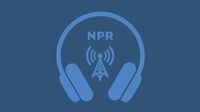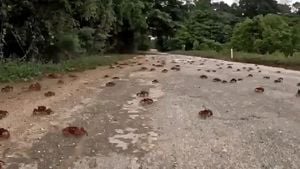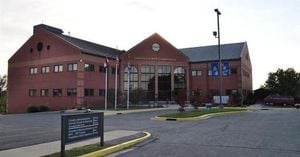In the aftermath of a harrowing two-year war in Gaza, a fragile ceasefire has offered a glimmer of hope, yet the scale of devastation is almost unfathomable. Tens of thousands have been killed, and about 170,000 wounded, according to Gaza health authorities—a toll that includes a staggering number of children. As the dust settles, stories of survival and loss continue to emerge, painting a vivid picture of a humanitarian crisis that will reverberate for generations.
Among the countless stories is that of Dr. Mahmoud Saleh, a 28-year-old medical intern whose journey through the conflict encapsulates both the resilience and the suffering of Gaza’s people. According to NPR, Saleh returned to Gaza just two months before the war erupted in October 2023, narrowly escaping turmoil in Sudan where he had been studying. Instead of finding safety, he found himself caught in one of the world’s deadliest conflicts.
Saleh’s experience as a doctor at Indonesian Hospital in North Gaza was marked by repeated displacement. "Seeking safety and food during the famine, we displaced many times—I think seven times—fleeing from the area of war zone to what's called the humanitarian areas," he recalled. Like so many Gazans, Saleh and his family were constantly on the move, searching for food and shelter as airstrikes and fighting raged around them.
Food distribution became a lifeline, but also a source of peril. The Gaza Humanitarian Foundation (GHF), a U.S.-backed operation, managed distribution sites under the watchful eyes of armed security and Israeli forces. The United Nations reported that over 1,000 Palestinians were killed while attempting to secure food, most near GHF aid sites. The Israeli military acknowledged firing warning shots near these locations, saying they acted only when perceiving threats.
Saleh described the chaos and danger at these sites. On a Saturday in early September 2025, at the Ashakush Distribution Center, tragedy struck when a woman stepped out from behind a metal barrier to reach for a box of food. "As soon as she showed her head, the sniper fired, hitting her with a direct explosive round to the head. Her brain matter splattered everyone nearby, including myself. Nothing remained with the woman head," Saleh recounted to NPR. Despite the horror, Saleh pressed on, driven by the desperate need to feed his family. He managed to secure a 50-pound sack of flour, a lifeline in a time of starvation.
The danger was ever-present. In another episode, Saleh found himself among thousands racing for one of just 1,000 available food boxes when security forces began firing. "I was running, and the bullets were explode on the asphalt just beneath my feet," he said. During the chaos, a 10-year-old boy named Abdullah Ahmed was struck by a bullet that rebounded and exploded, severing his left hand. Saleh acted quickly, using his shirt to stop the bleeding and rushing the boy to the hospital.
On September 14, 2025, the Ashakush site was again the scene of violence. According to Gaza health authorities, at least four Palestinians were killed and 25 injured when grenades were thrown into the crowd and a truck, its tire blown out, careened into people. Saleh was among the severely injured. "I was one of those severely injured. The truck ran over both of my leg from the knee down," he said. In the chaos, Saleh used his clothing as a tourniquet and, with remarkable presence of mind, pushed his exposed calf bone back into place so he could walk. He managed to walk seven minutes before a car took him to the hospital.
But the ordeal was far from over. Due to scarce resources, Saleh’s wounds were not properly cleaned until 32 hours after the incident. "The resources here are scarce, and that my wound weren't properly cleaned until 32 hour after the incident," he explained. The delay allowed bacteria to set in, and ultimately, his worst fear came true: "My worst fear has become realized, and they amputated my left leg above the knee."
Saleh’s responsibilities extend beyond his own survival. As he told NPR, he is the sole support for his father, his widowed sister, and his nieces. When interviewed a few days before the October 2025 ceasefire, he was recovering in a tent on the Nasser Hospital grounds, even as Israeli drones hovered overhead. "OK, I see a big drone above. It's so close," he said, noting the ever-present threat that lingered even as hopes for peace began to flicker.
Saleh wanted the world to understand his plight. "I want everyone hear my voice to understand I was not a soldier or a fighter. I still a doctor. I was simply a son or a brother trying to keep his family from starvation," he said. The ceasefire brought him joy, but also apprehension. He worried, like many others, that it might only be a temporary reprieve.
The broader impact of the war on Gaza’s children has been catastrophic. According to UNICEF, more than one million children have endured what the organization calls "the world’s most dangerous place to be a child." Edouard Beigbeder, UNICEF’s Middle East and North Africa Regional Director, described the devastation as "wholesale" and warned that "words and numbers alone cannot convey the scale of the impact on children that I saw—an impact that will last for generations." UNICEF data show that more than 64,000 children have been killed or injured, and over 58,000 have lost a parent since the war began.
UNICEF has been working to mitigate some of the suffering, providing face-to-face education for over 100,000 Palestinian children and striving to return all 650,000 school-age children to classrooms. "The importance of restoring education in this early recovery work cannot be overstated. After two lost years, families know that a return to proper education will provide a foundation for learning, healing, hope, and long-term social cohesion in their communities," Beigbeder said.
Despite some increase in humanitarian aid, UNICEF has called for Israel to open all border crossings to allow the entry of essential supplies, including education kits and psychosocial support materials that have been blocked for over a year. "We need these kits to enter immediately," Beigbeder insisted, underscoring the urgency of the situation.
The ceasefire, which took effect on October 10, 2025, is the first phase of a U.S.-brokered 20-point plan under President Donald Trump. The plan includes the release of Israeli hostages in exchange for Palestinian prisoners, the rebuilding of Gaza, and the establishment of a new governing mechanism without Hamas. Whether this plan will deliver lasting peace remains to be seen, but for now, it offers a measure of hope to a population battered by years of war.
As Gaza begins the slow process of recovery, the stories of survivors like Dr. Saleh serve as a stark reminder of the cost of conflict—and the urgent need for sustained humanitarian support and genuine peace.





